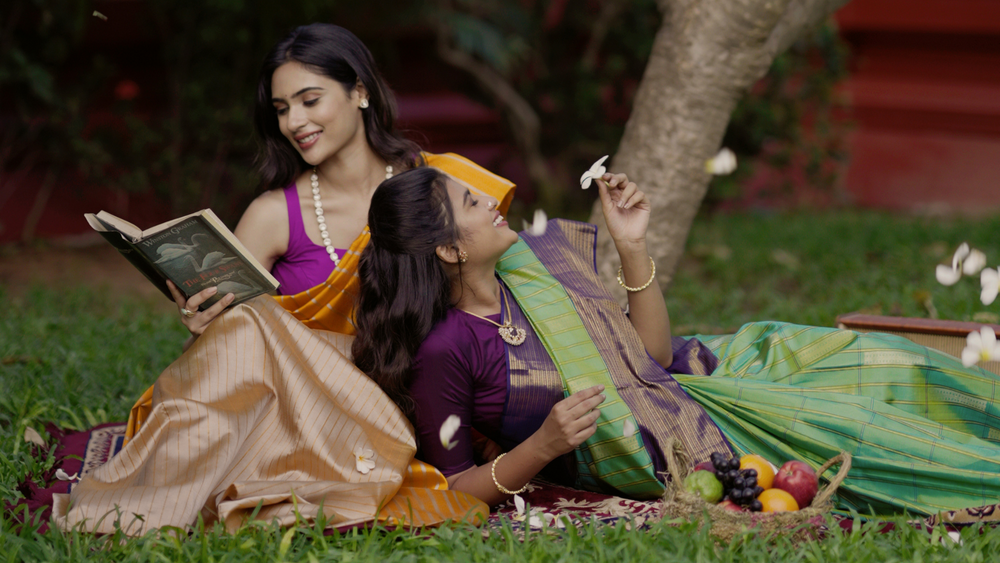How to Identify Real Zari in Handwoven Silk Sarees: A Complete Expert Guide by Pashudh
If you’ve ever looked at a silk saree and wondered what gives it that rich golden glow, it’s the zari the metallic thread woven through the fabric. But what most people don’t realize is that not all zari is real. Real zari is made using pure silver threads coated with gold, while imitation zari is usually made from copper or synthetic material polished to look similar. The difference may not be obvious at first glance, but it changes everything from how the saree shines to how long it lasts.
Knowing what real zari is and how it differs from imitation zari helps you choose sarees that truly reflect India’s rich weaving heritage. Real zari isn’t just about appearance; it’s about authenticity, craftsmanship, and the timeless artistry that turns a saree into an heirloom.
Zari Weaving: The Traditional Art Behind Indian Silk Sarees
Zari weaving is more than decoration it is a centuries-old craft that embodies India’s rich textile heritage. Originating in royal courts and temples, zari threads were traditionally made of pure gold and silver, used to embellish garments that celebrated prosperity, devotion, and festivity.
What Is Real Zari and Why It’s So Valuable in Silk Sarees
Real gold zari represents the pinnacle of craftsmanship. Each strand is created by wrapping 100% pure silver thread with a fine 24-carat gold coating, then handwoven into silk using time-honoured techniques.
Investing in a pure zari saree means owning a timeless treasure; it is embracing a tangible piece of cultural history.
Pure Zari vs Imitation Zari: How to Tell the Difference
Tested or imitation zari is made using copper, metallic, or synthetic threads polished to resemble gold. While these threads may sparkle at first glance, they cannot match the durability, depth, or elegance of real gold zari.
For saree connoisseurs who appreciate heritage and longevity, the difference between real and imitation zari is profound.
Why Real Zari Sarees Are Worth the Investment
Owning a saree with real gold zari is about more than beauty it’s a commitment to culture, artistry, and authenticity.
In contrast, imitation zari offers temporary sparkle but cannot replicate the depth, warmth, and legacy of authentic craftsmanship.
How to Check If Zari in a Saree Is Real or Fake
Wondering if a saree contains real zari? Look for these signs:
Additionally, examining the saree’s weave and border design can reveal the quality and density of zari threads. Genuine handwoven silk sarees often have intricate motifs and consistent zari thickness throughout.
How to Care for and Maintain Real Zari Sarees
A real zari saree is an investment in both artistry and culture. Proper care ensures that its beauty and value endure for generations:
Following these steps preserves the zari’s radiance and ensures that the saree remains a cherished heirloom.
Pashudh’s Commitment to Authentic Zari and Pure Silk Weaving
At Pashudh, authenticity isn’t a choice it’s our heritage. Every saree is handwoven by skilled artisans using authentic real zari and pure silk, crafted with care, patience, and precision that reflects generations of mastery. Each weave tells a story of tradition, artistry, and timeless elegance made to be cherished for years to come.
When you choose a Pashudh’s silk saree, you’re not just wearing luxury; you’re carrying forward a legacy of authentic Indian craftsmanship. Explore our handwoven pure zari kanjivaram silk saree collection and experience the glow of real zari that’s made to last a lifetime.
Choose heritage. Choose authenticity. Choose Pashudh.



Leave a comment